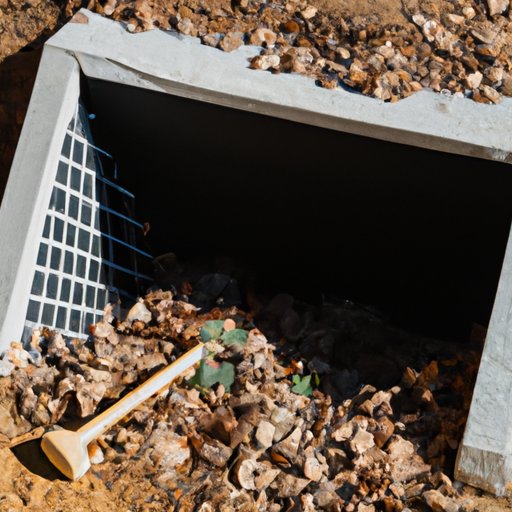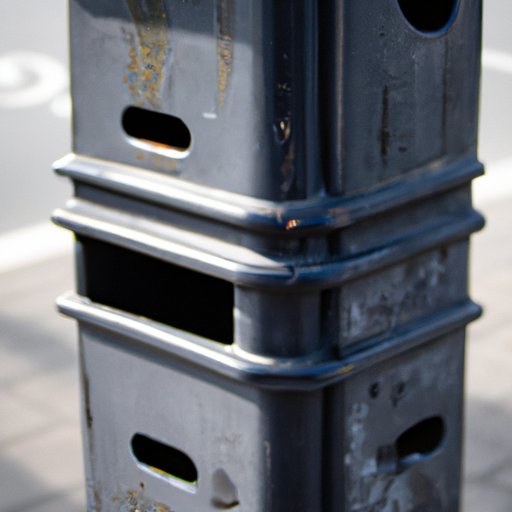How Deep Does a Mailbox Post Need to Be?
Every day, people across the country face the common problem of a leaning or unstable mailbox. It may seem like a small inconvenience, but it can cause frustration and even potential damage to your mailbox and mail. The key to a stable and durable mailbox lies in the proper depth of the mailbox post. In this article, we will explore the ideal depth for a mailbox post and provide you with all the information you need to ensure your mailbox stands the test of time.
The Ideal Depth: Determining the Perfect Placement for Your Mailbox Post
Have you ever wondered why the depth of your mailbox post matters? Proper mailbox post depth is crucial for a number of reasons. First and foremost, it provides stability and prevents the post from leaning or toppling over. Additionally, the right depth can protect your mailbox from damage caused by external forces, such as heavy winds or accidental vehicle impact. To determine the ideal depth for your mailbox post, there are a few factors you need to consider.
Soil Conditions
The type of soil in your area plays a significant role in determining the depth of your mailbox post. Sandy or loose soil may require a deeper post to ensure stability, while compacted or clay-filled soil may allow for a shallower depth. It is important to assess the soil composition in your specific location to determine the appropriate depth.
Climate and Weather Patterns
The climate and weather patterns in your area can also influence the ideal depth for your mailbox post. If you live in an area prone to strong winds or severe storms, a deeper post will provide added stability. On the other hand, if you experience milder weather conditions, a slightly shallower depth may be sufficient.
Local Regulations and Guidelines
Before you dig any holes for your mailbox post, it is important to check with your local municipality or homeowners’ association for any regulations or guidelines regarding mailbox placement. Some areas may have specific requirements for mailbox post depth to ensure uniformity and safety within the community.
Digging Deeper: Exploring the Optimal Depth for Mailbox Posts
When it comes to mailbox post depth, there is no one-size-fits-all solution. However, there is a general range of depths that can serve as a starting point. Typically, mailbox posts should be buried between 18 and 24 inches deep. This depth provides a good balance of stability and ease of installation. However, specific factors may require you to deviate from this range.
When determining the ideal depth for your mailbox post, it is important to consider the advantages and disadvantages of different depths. A deeper post provides increased stability, especially in areas with unfavourable soil conditions or extreme weather patterns. On the downside, it may require more effort and time during the installation process. On the other hand, a shallower post may be easier to install but could result in a less stable mailbox, particularly in areas prone to strong winds or heavy snowfall.
Depth also affects the longevity of your mailbox post. A deeper post provides greater resistance against external forces, reducing the risk of damage or displacement. It is essential to strike the right balance between ease of installation and long-term durability when determining the depth for your mailbox post.

The Science Behind Mailbox Post Depths: Setting the Foundation Right
Mailbox post depth may seem like a simple concept, but there is actually science behind it. A properly anchored mailbox post relies on the principle of leverage and stability. When a post is buried deep into the ground, it creates a larger base, distributing the force applied to the post over a larger area. This makes it less likely to lean or topple over when subjected to external forces.
On the other hand, a shallow post has a smaller base, which means it is more susceptible to being pushed over. Even a slight force, such as a gust of wind or accidental contact with a vehicle, can cause a shallow post to lean or become dislodged. Science tells us that the deeper the post, the more stable it will be and the better it will withstand external forces.
To truly understand the importance of depth, consider the following scenario: two identical mailbox posts are installed side by side—one at the recommended depth of 24 inches, and the other at a shallower depth of 12 inches. In a windstorm, the mailbox supported by the deeper post remains upright and secure, while the one with the shallow post leans precariously or falls over entirely. This showcases the significant difference proper depth can make in the stability and longevity of a mailbox post.
From Inches to Feet: Finding the Right Depth for Your Mailbox Post
Now that you understand the importance of depth and how it affects the stability of your mailbox post, it is time to determine the ideal depth for your specific situation. Follow these step-by-step instructions to ensure your mailbox stands strong for years to come.
Step 1: Assess Your Post Height
Before you can determine the depth, you need to know the desired height of your mailbox. Measure the height of your mailbox, including the post, to ensure it meets any required regulations. This measurement will help you determine the overall length of the post, including the portion that will be buried.
Step 2: Consider the Mailbox Weight
The weight of your mailbox can also impact the depth required for stability. Heavier mailboxes may require a deeper post to ensure they do not tip or lean. Take the weight of your mailbox into account when deciding on the depth, as it may influence the overall stability of the structure.
Step 3: Gather the Necessary Tools and Materials
Before you begin digging, make sure you have all the tools and materials you need for the job. This may include a shovel or post hole digger, a level, gravel or concrete mix for anchoring, and any additional equipment required for your specific situation.
Step 4: Dig the Hole
Using your chosen digging tool, start digging a hole with a diameter large enough to accommodate the post and provide a stable base. As a general rule, the diameter should be three times the width of the post. Begin with a depth within the recommended range (18-24 inches) and adjust as necessary based on your specific circumstances.
Step 5: Insert the Post
Once the hole is dug to the desired depth, carefully insert the post into the hole, ensuring it is plumb and level on all sides. Double-check the height and make any necessary adjustments before proceeding.
Step 6: Anchor the Post
To ensure stability and longevity, it is crucial to properly anchor the post. This can be done using gravel or a concrete mix. If using gravel, fill the hole around the post, ensuring it is evenly distributed and compacted. If using concrete, follow the manufacturer’s instructions to mix and pour it into the hole around the post. Use a level to make sure the post remains plumb and adjust as needed.
Digging In: Unraveling the Mystery of How Deep Your Mailbox Post Should Go
As you embark on the journey of determining the ideal depth for your mailbox post, it is important to address any common misconceptions or myths that may arise.
One common myth is that deeper is always better when it comes to mailbox post depth. While a deeper post does provide increased stability, it is important to find the right balance for your specific circumstances. Factors such as soil conditions, climate, and mailbox weight all play a role in determining the optimal depth.
Additionally, it is important to consider other factors that may impact the stability of your mailbox post. The frost line, for example, is the depth at which the ground typically freezes in your area. It is essential to dig below the frost line to prevent the ground from shifting and causing your mailbox post to become unstable.
Setting the Stage: Understanding the Importance of Correctly Anchoring Your Mailbox Post
Now that you have determined the ideal depth for your mailbox post, it is crucial to understand the significance of proper anchoring methods. Without proper anchoring, even a well-placed and deep post can become unstable and susceptible to damage.
There are various anchoring options available, but two of the most common are concrete and gravel. Concrete provides a solid and sturdy base, offering maximum stability. Gravel, on the other hand, allows for improved drainage and flexibility. Both methods can be effective if executed correctly.
When anchoring your mailbox post, follow these step-by-step instructions for a secure installation:
Step 1: Prepare the Anchoring Material
If using concrete, mix the concrete according to the manufacturer’s instructions. If using gravel, ensure it is properly prepared and ready to be used as a filler.
Step 2: Fill the Hole
With the post in place and level, begin filling the hole with the concrete or gravel. It is essential to pack the material tightly and evenly around the post to ensure proper support and stability.
Step 3: Level and Adjust
As you fill the hole, periodically check that the post remains plumb and level from all angles. Make any necessary adjustments to ensure a straight and stable mailbox post.
Step 4: Allow to Cure
If using concrete, allow the material to cure according to the manufacturer’s instructions before adding any additional weight or stress to the post. This will ensure the concrete sets fully and provides maximum stability.
Conclusion
Determining the ideal depth for your mailbox post is crucial for stability and longevity. By considering factors such as soil conditions, climate, and local regulations, you can ensure your mailbox stands the test of time. Remember the science behind proper anchoring, and make sure to follow the step-by-step instructions to securely install your mailbox post. Take action today to guarantee a stable and dependable mailbox for years to come.
(Note: Is this article not meeting your expectations? Do you have knowledge or insights to share? Unlock new opportunities and expand your reach by joining our authors team. Click Registration to join us and share your expertise with our readers.)
